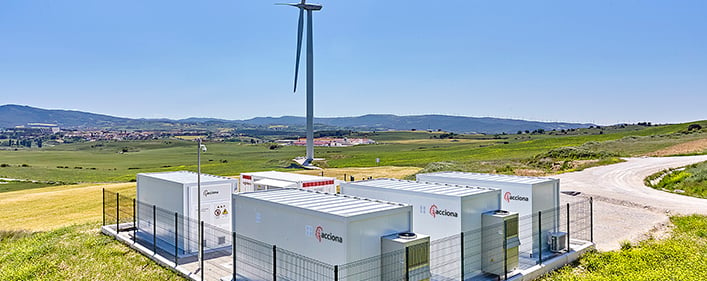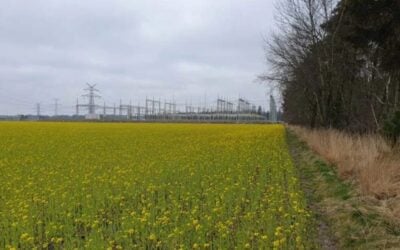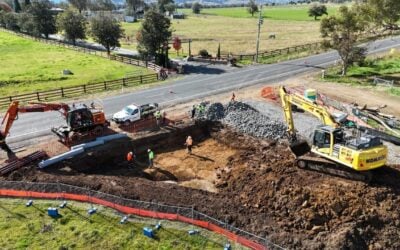
The first of Spain’s new renewable energy auctions is set to take place next week, as the country offers the possibility for bidders to include energy storage in their offers.
While the upcoming auction on 26 January aims to procure 3GW of clean energy capacity – with 1GW for solar PV, 1GW for wind and the remaining capacity without technological restriction – all bids are allowed to have a storage component: “It’s really open to what bidders think is the most competitive,” said Tanguy Poirot, energy storage analyst at consultancy Clean Horizon. The volume of energy storage awarded in the auction could be anywhere between zero and several GWh, as there is no specific volume required by the rules.
Enjoy 12 months of exclusive analysis
- Regular insight and analysis of the industry’s biggest developments
- In-depth interviews with the industry’s leading figures
- Annual digital subscription to the PV Tech Power journal
- Discounts on Solar Media’s portfolio of events, in-person and virtual
Winning bids will receive a 12-year power purchase agreement (PPA) with a variable market exposure. Developers can either submit a conventional renewable bid or a dispatchable renewable bid, which requires 2MWh of storage to be installed for each MW of wind or solar. While conventional solar and wind tariffs will secure a 5% market exposure, dispatchable solar and wind tariffs will have a 25% market exposure.
Poirot said that although Spain’s large-scale energy storage market is currently limited to pilot projects or research and development facilities, the market is set to take off thanks to the government’s Integrated National Energy and Climate Plan (PNIEC) that aims to install 2.5GW of utility-scale battery systems by 2030. “To date, there was absolutely no market rationale to deploy large-scale storage systems in Spain. But this government target has triggered changes in the regulatory framework by granting storage a specific status. In addition, new markets are in the process of opening up to storage, such as ancillary services.”
Last October, Spain’s draft energy storage strategy was published, confirming the target to deploy up to 2.5GW of battery storage capacity and providing means to enable deployment. The country went on to announce an overhaul of its framework for carrying out clean energy auctions to help it reach a goal of installing around 60GW of renewables capacity by 2030, a target included in the PNIEC. That roadmap sees the development of storage as one of the key tools to provide flexibility for the system and support the significant growth of renewables.
A source from Spain’s energy and environment ministry told Energy-Storage.news that storage has been included in the auctions as “it is key in the transition process towards an emissions-neutral economy and is essential to guarantee supply security, increase competitiveness and guarantee low prices”.
The source added that as well as making it possible to tackle gaps between generation and demand, storage “encourages citizen participation in the change of energy model and allows greater competition and integration in the electricity market”.
A recently published indicative auction calendar foresees at least 10GW of PV capacity and 8.5GW of wind to be auctioned in Spain in the next five years, with renewables projects paired with storage allowed to participate.
While energy storage supported bidders in last year’s solar auction in Portugal – which saw the majority of bids submitted with storage and saw record-low prices – the Spanish mechanism “is less attractive”, according to Poirot. “The Portuguese auction model was granting solar-plus-storage bids a capacity payment in exchange for hedging the Portuguese electricity system against high market prices,” he said. “This capacity payment, initially fixed at €33,000/MW of grid connection/year, was a real upside for storage bids, while the storage system itself was almost free of constraints to operate on the different markets.
“On the contrary, the Spanish auction only gives a higher market exposure to renewable-plus-storage bids, which represents a more risky incentive and comes with storage operational constraints.”
One of the downsides Clean Horizon has identified in the Spanish auction system is that storage will only be allowed to charge from the renewable project it is coupled with, meaning installations are not permitted to charge any energy from the grid. Poirot said: “It’s an additional constraint that may make the auction less attractive. A PV-plus-storage system participating in this auction will not be able to charge from the grid during the night (thus benefiting from low prices) and discharge during the morning peak.”
According to Corentin Baschet, head of market analysis at Clean Horizon, storage is likely to be allowed to participate in future renewables auctions in other European markets. “However, storage will only be deployed if it enables the bid to be more competitive, which is not always the case,” he said. “For the Spanish auction, storage increases the developer’s exposure to market prices; storage profitability therefore depends on future wholesale prices.”
He added that storage deployment in Europe is driven by ancillary services and capacity markets: “Revenues from arbitrage on the wholesale markets are too low to justify a business case in most European countries today. A number of European countries are looking for ways to promote storage deployment in order to increase their flexibility. They just need to find the right way to make this happen and decide whether they want to subsidise these investments or let storage compete with other assets by opening existing markets.”






